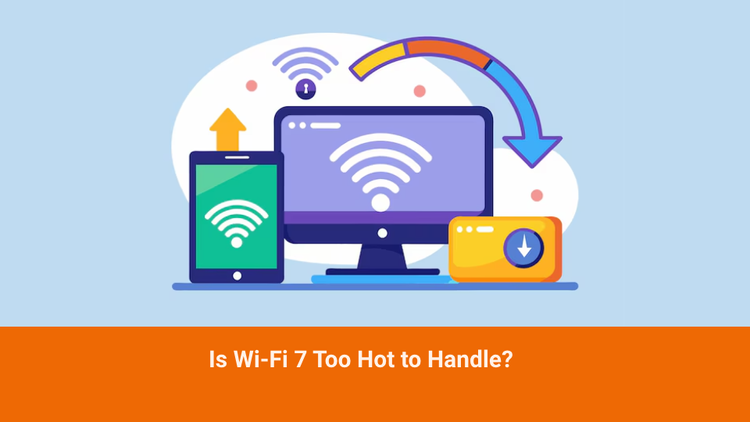Wi-Fi 7

Wi-Fi is a wireless networking technology that enables devices to connect to the Internet, including printers, video cameras, mobile devices like wearables and smartphones, and computers like desktops and laptops. It enables these devices, and many others, to communicate with one another, forming a network. A wireless router provides internet connectivity. When you use Wi-Fi, you connect to a wireless router, which allows your Wi-Fi-enabled devices to communicate with the Internet.

What “Wi-Fi” means?
Wi-Fi is a brand name developed by a marketing firm that is intended to act as an interoperability stamp for marketing efforts.

The IEEE 802.11 evolution
In 1997, the first 802.11 standard was released. Since then, several initiatives have helped to significantly modify and improve the standard. These initiatives have typically started as Topic Interest Groups (TIGs), which research novel use cases or advancements that could impact the standard. The TIG may then evolve into a Study Group and ultimately a Task Group (TG), whose objective is to specify the standard adjustments required to satisfy the use cases specified by the TIG. A code letter, in lowercase and alphabetical sequential sequence, is allocated to each TG (e.g., 802.11a, 802.11b,..., 802.11aa, 802.11ab,...). A task group publishes an amendment (such as "the 802.11ax amendment") after finishing its work.
802.11 established the station (STA) as the central component of 802.11 communications from the beginning. STA is a logical entity that can be uniquely addressed (i.e., it has a single, unique MAC address) that performs 802.11 physical (PHY) and Medium Access Control (MAC) tasks. It is not a physical device. In the context of 802.11, the STA is not the device itself, even if it may be placed within a typical client device (such as a laptop or smartphone).

STAs can communicate with one another directly. This direct communication is helpful in a variety of situations, especially when there is a unique link between the STAs (for instance, when your smartphone and smartwatch need to communicate). Naturally, the relationship is more than just a pair: Two or more STAs can communicate with one another. This example assumes that the STAs are within communication range of one another, or that each STA sends 802.11 signals that the intended other STA or STAs can successfully receive (demodulate and decode). A Basic Service Area (BSA) is the region that a STA's signals cover, and a Basic Service Set (BSS) is the group of STAs that can interact with one another. It is not essential that every STA in the BSS be able to communicate with every other STA when there are more than two STAs present. For instance, certain STAs could be unreachable to other STAs.
These STA-to-STA communications are restricted to the 802.11 wireless medium and space. Implementing a STA with a Local Area Network (LAN) connection in the BSS is a standard procedure that enables STAs to communicate outside of that area. A distribution system is the system and interface that permits such a connection (DS). According to 802 standards, a local area network (LAN) is a collection of devices that span a constrained geographic area. The LAN is typically thought of as a wired network (such as Ethernet) by implementers, however the 802.11 definition of the DS makes no mention of this.
The IEEE 802.11be
The 802.11be amendment to the 802.11 standard was administered by the IEEE. The Wi-Fi Alliance selected the 802.11be draft (v3.0) as a basis for creating a Wi-Fi 7 certification during the development process since it was evident that the market was keen to take advantage of the enhancements outlined by the 802.11be group.
From its very beginning, the IEEE 802.11be project followed an out of the box approach with concepts that questioned the very foundations of Wi-Fi. A few being:
“How can a single client device be associated to two Access Point (AP) devices radios?”
“How do the AP and client devices manage the security of the association in that case?”
“How would frames be reassembled if they are split over several, unsynchronized radio links?”
The answers to these questions are not obvious, because they must be built upon the six previous generations of 802.11 Wi-Fi standard that ensures backward compatibility as an important requirement.
To find out more about the above-mentioned questions and to unravel other Wi-Fi 7 mysteries, join us on this journey in the upcoming series of blogs exclusively on LogicApt’s website.
References
- IEEE 802.11 Wireless LAN Working Group
- What Is Wi-Fi?
- Wi-Fi 7 in Depth: Your Guide to Mastering Wi-Fi 7, the 802.11be Protocol, and Their Deployment, Jerome Henry, Brian Hart, Binita Gupta, Malcolm Smith, Pearson Education, 2024.



